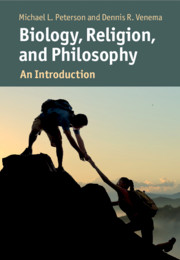Book contents
- Biology, Religion, and Philosophy
- Cambridge Introductions to Philosophy and Biology
- Biology, Religion, and Philosophy
- Copyright page
- Dedication
- Contents
- Acknowledgments
- Introduction
- Part I General Issues
- 1 Science, Biology, and Religion
- 2 The Origin and Nature of Life
- 3 The Question of Design in Living Systems
- 4 Biology and the Problem of Natural Evil
- 5 Progress, Purpose, and Providence
- Part II Religion and Human Biology
- Glossary
- Further Reading
- Index
1 - Science, Biology, and Religion
from Part I - General Issues
Published online by Cambridge University Press: 25 March 2021
- Biology, Religion, and Philosophy
- Cambridge Introductions to Philosophy and Biology
- Biology, Religion, and Philosophy
- Copyright page
- Dedication
- Contents
- Acknowledgments
- Introduction
- Part I General Issues
- 1 Science, Biology, and Religion
- 2 The Origin and Nature of Life
- 3 The Question of Design in Living Systems
- 4 Biology and the Problem of Natural Evil
- 5 Progress, Purpose, and Providence
- Part II Religion and Human Biology
- Glossary
- Further Reading
- Index
Summary
A discussion of the relationship between biology and religion is a subset of the larger conversation about the relationship between science and religion. At the turn of the seventeenth century, the new astronomy catalyzed the Scientific Revolution, which raised questions about whether the Roman Catholic Church or practicing scientists were properly entitled to make claims about the structure and operation of the heavens. As modernity unfolded, the Newtonian Revolution consolidated its position: the purview of the natural sciences – from astronomy to physics to chemistry – was to make claims about the structure and operation of the physical world that were grounded in empirical research and not religious dogma. In the middle of the nineteenth century, the science of biology, mostly in the form of natural history and practiced by Darwin and others, caused new tensions with religion. Biology has remained at the center of much controversy with religion – and now, given their influence in contemporary life, what we may call the emerging “biosciences” present new challenges to which religion must continually respond.
- Type
- Chapter
- Information
- Biology, Religion, and PhilosophyAn Introduction, pp. 7 - 31Publisher: Cambridge University PressPrint publication year: 2021

